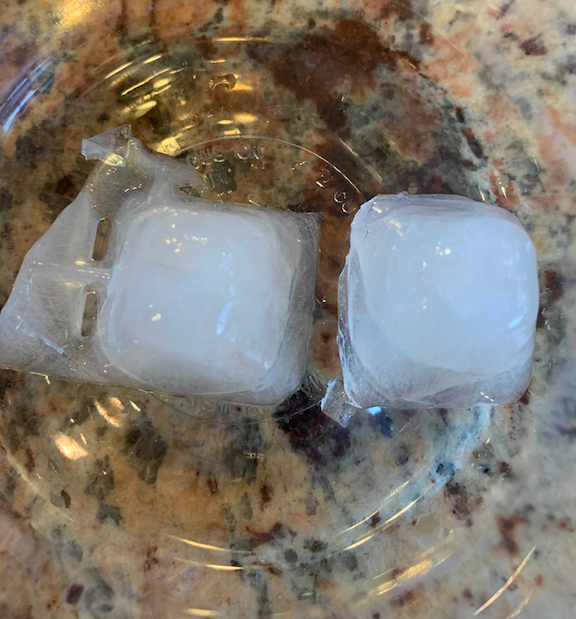Why Your Ice Cubes are White

Pour yourself a glass of water and, hopefully, it’s clear. If it weren’t, you’d probably think twice about drinking it. But take that very same water, pour it into an ice cube try, and freeze it? You’d probably be more forgiving. Take, for example, the pair of ice cubes pictured above. They’re not clear at all — they are white and cloudy.
You’ve almost certainly experienced the same: safe water turning into ice cubes with white centers or bottoms. And you’ve probably used those ice cubes without a second thought. Don’t worry; they’re perfectly safe to put into a drink. (I’m rather sure of this; they came out of my freezer and went into my iced tea, and I’m still here.) But something happens as the water moves from faucet to freezer to cup that causes this. What is that white stuff?
The short version is: you don’t want to know.
No, just kidding. It’s just gas, and maybe some harmless sediment. When water freezes, it doesn’t do so uniformly. The process, as The Kitchn explains, forces any dissolved gasses or other impurities toward whatever region freezes last:
Crystallization usually starts with an impurity, like a tiny speck of dust, something for crystals to grow from and build upon (also known as nucleation). [Then,] ice freezes from the outside in because the tray and surface of the water are exposed to colder temperatures. [And finally,] crystallization pushes away impurities (such as dissolved minerals and gases), therefore in the case of ice cubes, these impurities are pushed to the center of the ice cubes.
As a result, if you look carefully at an ice cube, you can tell how it was made. If the ice came from an ice maker, the water freezes from the perimeter in, causing the white area to be in the center of the cube. But if the ice came from an ice tray, the tops of the ice cubes will be clear while the bottoms will be white. That’s because the top was is exposed directly to the cold air while the bottom was insulated a bit by the tray itself.
Again, those impurities are harmless, especially in the small amounts found in ice. But if you’re a drink aficionado, you probably don’t want anything mucking up the taste of your beverage — and therefore, making clear ice cubes is a worthy goal. It’s doable, but it takes some time and planning. Epicurious put it to the test so you don’t have to experiment. Their recommendation? Boil distilled water twice. Per the food mag, the resultant ice “wasn’t crystal, but all the air had been consigned to a little cloud toward the bottom of the cube of ice, and the rest of it was beautifully translucent—something you could feel a little bit proud to serve to guests.”
Bonus fact: Iced tea can be bad for your teeth and other bones — if you drink a ridiculous amount of it. In 2013, a woman was diagnosed with skeletal fluorosis, a condition caused by having too much fluoride. Those afflicted with the condition have brittle bones, joint pains, and can lose most of their teeth. In this woman’s case, it was her iced tea habit that was the culprit. Per CBS News, “she drank a pitcher of tea every day for the past 17 years that contained anywhere from 100 to 150 tea bags” [!]. Brewed tea is high in fluoride, and, again per CBS, “the woman’s blood serum concentration of fluoride was 0.43 milligrams per liter, more than four times the normal concentration.”
From the Archives: Why Dippin’ Dots Never Became the Ice Cream of the Future: I’m not sure this is actually related to today’s story or bonus fact, but both involve freezers? I guess? Whatever, it’s a good story, you’ll enjoy it. (Probably more than you’d enjoy Dippin’ Dots, which are kind of overrated beyond the novelty factor.)
